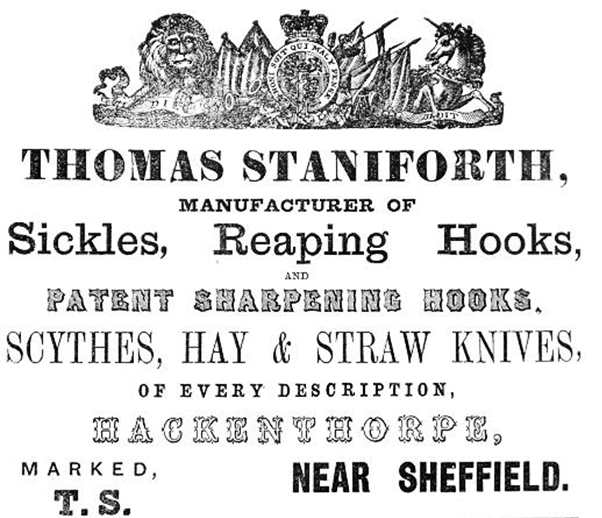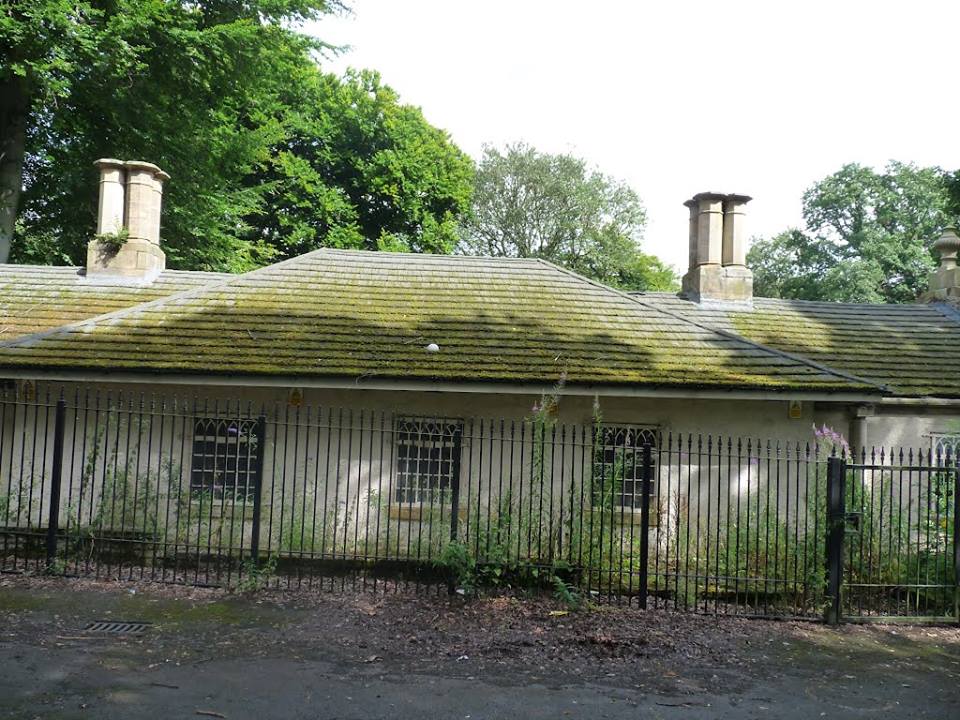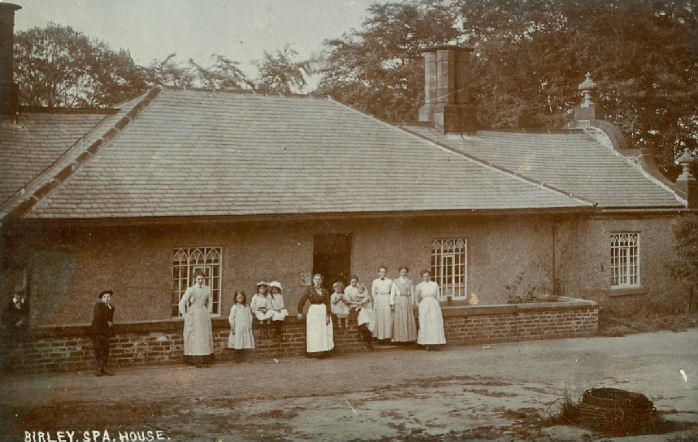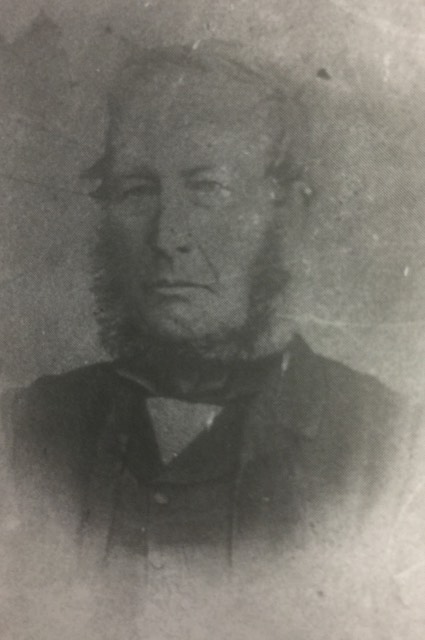
Thomas Staniforth & Co. Sickle works at Hackenthorpe.
 Birley Spa in 2012
Birley Spa in 2012
Birley Spa is a bath house located on the edge of the Shirebrook Valley in Hackenthorpe. Although there has been a strong tradition and belief that there once stood a Roman bath in the area, there has been no proof. It could, however, well be true as the old Roman Ricknield Street ran from Chesterfield through Hanley, Ridgeway, High lane and across Birley Moor towards Woodhouse, this would bring the road close to Birley Spa. The location of the current Bath House, hidden from view with a stream flowing directly through would make it a very likely spot for a potential roman bath.
Dr. Thomas Short of Sheffield published a book in 1734 titled ‘The Mineral Waters of England’ which make reference to a spring in the Birley Spa area, this proves that there was at least that a spring existed long before the establishment of the current bath house buildings.
The late local historian T.L Platts mentions in his publication on Birley Spa that a headstone was found in the grounds bearing a date of 1701. A report claims that it was built by a Quaker man named either Robert or William Sutcliffe and there is evidence of a Robert Sutcliffe living in 1786. The same report states the building was made of stone and was almost square. The interior of the building featured a bath filled with very cold, clear water fed by an underground natural spring. There were rings around the sides of the bath so that people could take hold, and an area for people to dress and undress. Although at first permission was required to bathe, in later years anyone could attend. A bolt was fixed to the inside of the door so that intruders could not enter when occupied. This earlier iteration of the bath was in order in 1793 and later a large hollow filled with large stones was all that remained of this site.
1843 was the year the current Bath house came into existence when the Earl Manvers developed a “commodious establishment” which was used by locals and aristocracy alike. Prior to construction in 1842, Lord Manvers had plans drawn up for a bath house, combined with a hotel, the grounds were to feature seven grottos and two bridges would cross over the stream which flowed down through the valley. A description from the Gazetteer and Country Directory states ‘…respectable and commodious establishment with seven baths of various dimensions.. Situated in a sylvan and rural glen entirely surrounded by romantic hills, tastefully laid out’
Thomas Staniforth, owner of the Thomas Staniforth & Co Sickle and Scythe works on nearby Main Street was chose to manage the committee by Lord Manvers. Thomas was appointed with the task of forming the committee himself and chose his son-in-law George Cox, who was a local farmer, schoolmaster John Tillotson and farmer Edward Hobson.
An advertisement was placed in The Sheffield & Rotherham Independent on the 25th March 1843 which requested applications for a couple ‘of good character and without family’ to take on the management of the hotel. George Eadon was chosen out of the eleven replies, he was a married man who was paid a salary of £20 annually, with free rent and coal.
The grand opening of the spa was announced on May 1st 1843 and it was noted that ‘people afflicted with Rheumatism, Rheumatic Gout, Lumbago, Debility, Scorbutic and other complaints….” Had no need to make the long journey to Buxton, as they could now attend the local Birley Spa baths.
Three weeks later the Duke of Portland’s horse and carriage was seen approaching Birley Spa. Edward Hobson noted in his diary:
May 26th 1843. The Duke of Portland from Welbeck came to Birley Spa in his carriage with three horses abreast today. He took a hot bath.
May 27th 1843. The Duke took another hot bath today
May 28th 1843. The Duke took the third hot bath today
January 6th 1890. No bathing allowed on the Sunday except by order from a medical attendant.
 Birley Spa c1912
Birley Spa c1912
The baths were off to a great start, Thomas Staniforth kept up with his duties keeping accounts. Initially ticket sales were encouraging with family and friends of the workers being amongst the first visitors to attend. Thomas’ sister Sarah Ward came along as did his cousin James Staniforth from The New Inn with his wife Martha (nee Green). Another cousin of Thomas’ Ralph Haigh also attended as did his son Thomas Staniforth IV. The local schoolmaster Mr. Tillotson promoted the baths, buying tickets for a number of people including John Jubb of Drake House, and the Reverend Thomas Mountain, rector of St. Mary’s Beighton. Dr. Flory from a nearby boarding school also brought along a group of children.
There were of course a number of expenses, advertisements had to be paid for, as did the printing of the tickets, alcohol, bills from the Sheffield Coal Company etc. Not to mention George Eadon’s salary.
In May and June 1844 payments were made for meat and beer ‘at rearing’ which was a term used when a building was ‘topped off’. This shows evidence that the Spa was still being extended at this time. Other expenses noted from this time include ‘tape for bathing dresses’ which was purchased for eightpence.
George Cox was paid £10 for furniture and in August 1845 he is paid £21 ‘1 year of interest’ which shows he must have lent money to the Spa, and at the time, this was a substantial amount.
By 1845 however it seemed that the baths was not making a profit. By the end of the century only one plunge bath remained in operation and the hotel was no longer in operation.
 George Cox
George Cox
By 1895 the proprietor of Birley Spa was a local farmer and gardener named John Platts.
In 1913 it was sold to a cab proprietor who turned it into a pleasure gardens named ‘The Children’s Paradise’. This was a popular venue in its day, complete with a wishing well, paddling pool and a sandpit.
The Second World War forced the venue to close and following this the property went into a period of neglect.
Towards the end of the 20th Century interest was again focused on Birley Spa, and due to the hard work of Alan Bailey lottery funding was granted and the building was reopened as a venue for wedding receptions, as well as history events.
Alan Bailey passed away in 2006 and today the Birley Spa has entered a period of uncertainty, again being left neglected for over a decade. Although in 2018 it seems focus has again been brought to the building with locals commenting on the neglected area.
Although it is uncertain what the future holds for the Birley Spa Bath House, we cannot underestimate the history behind the building, from its construction 175 years ago to the present day, the building stands as a reminder of the past.